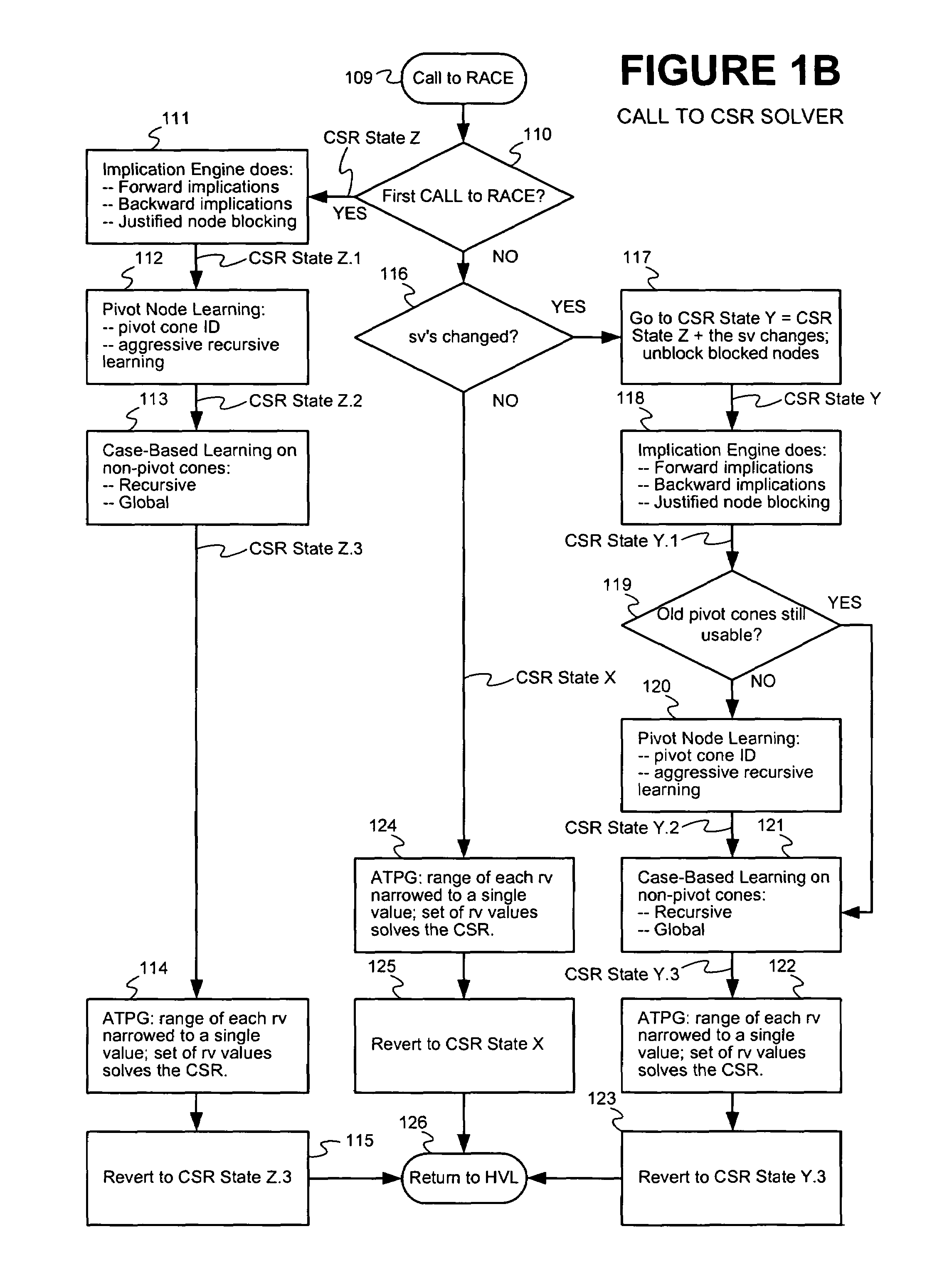Method and apparatus for improving efficiency of constraint solving
a technology of constraint solving and efficiency, applied in the field of solving sets of constraints, can solve problems such as complex assignment of variables to their variables, and achieve the effect of increasing efficiency (or computing speed, less time)
- Summary
- Abstract
- Description
- Claims
- Application Information
AI Technical Summary
Benefits of technology
Problems solved by technology
Method used
Image
Examples
example 1
[0333]Consider the following constraint solving problem, labeled Example 1, that is written in the Vera HVL:[0334]Example 1
[0335]
rand bit[3:0] a, b;rand integer c;constraint c1 {a + b == c * 2;}constraint c2 {c > 0;}
[0336]Here “a” and “b” are 4-bit unsigned random variables and “c” is a 32-bit signed random variable. Thus, “a,”“b,” and “c” can possibly take, respectively, 16, 16 and 232 values (the integer data type is assumed to be comprised of a 32 bit word). In the OpenVera language, c1 and c2 represent constraint blocks, with each block containing a constraint expression (or constraint). As can be seen, the constraint expression of block c1 is a declarative statement regarding a relationship that must be maintained over the variables “a,”“b,”“c,” and the constant value of 2. The constraint expression of block c2 is a declarative statement regarding a relationship that must be maintained between the variable “c” and the constant value of zero. The constraint solving problem compr...
PUM
 Login to View More
Login to View More Abstract
Description
Claims
Application Information
 Login to View More
Login to View More - R&D
- Intellectual Property
- Life Sciences
- Materials
- Tech Scout
- Unparalleled Data Quality
- Higher Quality Content
- 60% Fewer Hallucinations
Browse by: Latest US Patents, China's latest patents, Technical Efficacy Thesaurus, Application Domain, Technology Topic, Popular Technical Reports.
© 2025 PatSnap. All rights reserved.Legal|Privacy policy|Modern Slavery Act Transparency Statement|Sitemap|About US| Contact US: help@patsnap.com



